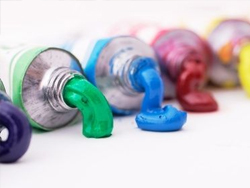Paint normally takes anywhere from several hours to a few days to dry, depending on the various factors such as the humidity, the surface to be painted, and the type of paint that is used. With the use of a paint drying agent however, the drying process can be accomplished in much less time.
Liquid driers also come in a few forms, including:
Terebine is much more effective at drying than liquid oil driers, although it contains linseed oil as well. This paint drying agent also contains lead and manganese.
Finally, gold size is a compound that wasn’t initially intended to be a paint drying agent, although its ability to dry quickly and form a hard film makes it suitable for that very purpose.
Back to Top
What is a paint drying agent?
A paint drying agent is a substance added to paints and varnishes in order to allow them to dry at a much faster rate. These drying agents work by enabling the oil content in paint to absorb oxygen at a much faster rate than usual. The result is dry paint at a fraction of the time that it would normally take. The typical paint drying agent usually contains a combination of metals including:- lead
- manganese
- cobalt
Metals used in paint drier
Manganese has the benefit of quick drying as well, and it doesn't discolor paint the way that lead does. However, one key disadvantage of using manganese as a paint drying agent is that the results tend to be unpredictable. In fact, the results that can be obtained by using manganese are usually less predictable than the results that can be obtained with the use of lead.Risks associated with ethanol use
The superior drying qualities of cobalt may make it seem like the perfect choice as a paint drying agent, and it is actually more effective than either lead or manganese when used for these purposes. However, the results that can be obtained from using cobalt are even less predictable than the results that can be obtained from using lead or manganese, which is why cobalt is most often mixed with lead in a paint drying agent.Paste and liquid driers
Paint drying agent usually comes in one of two forms:- paste (also called patent) drier
- liquid drier
Liquid driers also come in a few forms, including:
- liquid oil driers
- terebine
- gold size
Terebine is much more effective at drying than liquid oil driers, although it contains linseed oil as well. This paint drying agent also contains lead and manganese.
Finally, gold size is a compound that wasn’t initially intended to be a paint drying agent, although its ability to dry quickly and form a hard film makes it suitable for that very purpose.
Back to Top
Drying Agent

Drying Agent Resources
Sponsored Links
